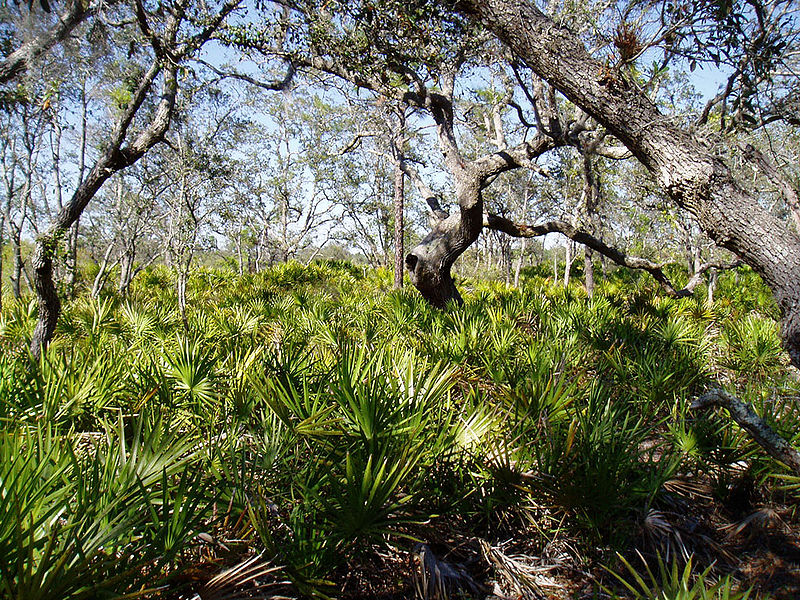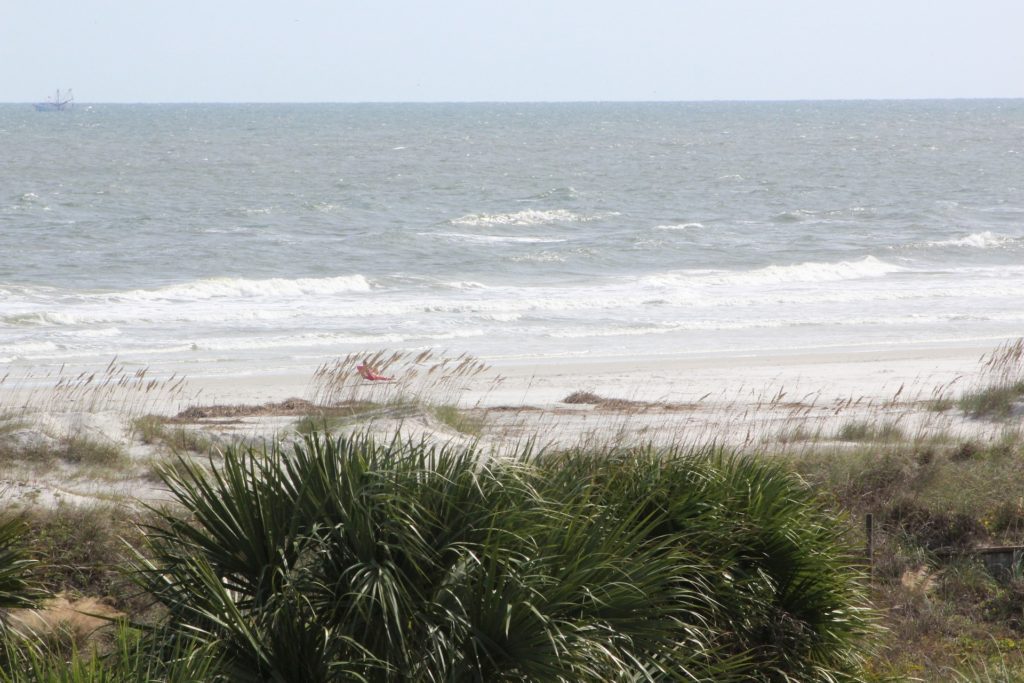Florida Deforestation Crisis
Florida Deforestation Crisis. Deforestation. The word comes up all the time in conversations about climate change and environmental impact , but how much do most of us really know about deforestation and its true effect? National Geographic defines deforestation as “the purposeful clearing of forested land” (1). Countless forests have been cut down to make room for civilization or to provide wood for manufacturing or building. Deforestation is one of the most obvious forms of environmental damage; we see it every day on the way to work in a casual glance at the many construction sites constantly appearing in new locations. Who even thinks twice when they see a newly-developed neighborhood, a construction area spotted with dirt heaps and tractors, or yet another road work crew on the job? Construction is a part of everyday experience, and because of this, we don’t always make the connection between destructive environmental degradation and that new neighborhood down the street. But they’re inextricably linked, and it’s time to start paying attention.
The Whole Picture
Key to any discussion of deforestation is a full understanding of the term ecosystem. Briefly put, an ecosystem is a “community of coexisting species together with the nonliving parts of their habitat” (2). Fundamental to every ecosystem is the presence of all the necessary components; animals, trees, plants, microorganisms, and water systems all work together to sustain healthy life. Take away one piece of the ecosystem and the entire setup falters. Florida is a notable global hotspot for biodiversity, full of vivid and healthy ecosystems that sustain all different species of animals and plants. But take away the trees and waterways – replace them with roadways and cities – and all of that changes.
One clue to Florida’s amazing biodiversity lies in its multiple climate zones. The U.S. is home to 11 different climate zones, designated by temperature ranges that allow the growth of different plant types (3). Florida in particular among the states is special because it contains the warmer zones 8-10, making it one of the only locations conducive to growing both tropical and subtropical plants. Wetlands are also a major part of the Florida landscape, and these damp, swampy areas provide a home to countless species and perform several other essential but often-ignored functions. Coastal wetlands act as a filter, removing excess pollutants and nutrients from water and preventing coastal erosion (4). However, human activities are severely damaging Florida wetlands, destroying these diversely inhabited wildlife homes and subjecting the landscape as a whole to unprecedented change.
Historic South Florida water flow vs. current water flow
Florida’s history includes the mentality of “draining the swamp”, which was a term associated with destroying wetlands to increase the areas in Florida available for construction. This mindset along with the “Florida is a blank canvas” ethos collectively normalized the destruction of the natural Florida landscape for the benefit of the real estate / tourism market. Little did these developers understand just how important the hydrology systems of wetlands are to our water system (5).
Florida’s red tides are partly a result of the expansive wetland loss, as these wetland ecosystems are no longer able to filter nutrient-filled liquid before it reaches larger bodies of water (6). Construction is systematically disturbing the balance of Florida’s expansive statewide ecosystem and contributing to such a major source of pollution.
Deforestation and Florida’s Trees
The unique Florida climate provides for a number of different forest habitats. Florida’s upland ecosystems, predominated by hardwood pine forests, scrub, etc. are home to many tree species (7). These habitats include: Pine Flatwoods, Oak Scrub, Coastal Strands, Coastal Scrub, Hammocks, Cypress Swamps, and more. Here is a short breakdown of some common Florida habitats and the important trees that call these places home:
Pine Flatwoods:
The Pine Flatwoods habitat is Florida’s most prevalent system and contains several types of pines, including the Longleaf Pine.
- Longleaf forests are home to abundant wildlife – even up to 50 different plant species in a square meter and endless animal species.
- Longleaf Pines are not rare even today and their forests once provided America’s timber, but due to demand, healthy longleaf forest systems have almost vanished over the Southeastern U.S.
- Longleaf Pine forests need a consistent cycle of forest fires to eliminate the clogging undergrowth that blocks a healthy longleaf ecosystem.
- Other Pine Flatwoods inhabitants include: Saw Palmetto, Wire Grass, Galberry, Wild Blueberry
Dry Prairie:
The Dry Prairie contains many grasses, shrubs, herbs, and a few pine trees among the smaller plants (7).

Oak Scrub:
The Oak Scrub, located on sands where the usual overhead layer of pines has been removed by fire or other causes, includes Myrtle Oak, Chapman’s Oak, Saw Palmettoes, and the classic Live Oak that so many Floridian front yards proudly display.
- Live Oaks can grow up to 60 feet tall, their leaf canopies spreading up to 100 feet and their trunk diameter up to 6 feet (8).
- Live Oaks number among those directly threatened by deforestation.
- Scrub Oaks are an essential understory tree, growing beneath the canopy of taller trees to provide homes and food for wildlife
- Scrub Oak trees are wildfire-resistant, sprouting again after a fire passes (9)

Coastal Habitats:
Sandy Coastal Strands are located along the Florida coastline. Coastal Scrubs are located in dune and sand ridge areas. These habitats abound with plants like the Saw Palmetto, Sea Grape, Cocoplum, and Prickly Pear Cactus.
- The Saw Palmetto is highly tolerant of salt, making it a perfect plant for sandy, salty coastal areas (10)
- Saw Palmetto berries provide food for all types of wildlife and hosts the larvae of Palmetto Skipper and Monk butterflies
- Drought-resistant and hardy, Saw Palmetto plants are a popular landscaping feature as well as a coastal habitat staple
Wetlands:
Hammock habitats include areas of wetlands. Oft-ignored Cypress Swamps are dominated by the Bald Cypress tree, which thrives in water most of the year round and creates a habitat for birds, alligators, river otters, and storks (11). Another threatened tree is the versatile Southern Red Cedar, which thrives in most Florida areas (12).
- Red Cedar trees are hardy and salt-resistant, able to withstand strong wind
- Red Cedars support the bird population through the berries and foliage cover they produce (13)
- Florida actually contains two types of Cypress: the Bald Cypress (which grows to 150 feet tall) and the smaller Pond Cypress, which thrives in slow or still water
- Cypress trees can live for hundreds of years (14)
More information about Florida Native habitats and ecosystems can be found here.
Florida Sandhill Cranes
Deforestation and Habitat Loss
31% of the earth’s land area is covered by forests (15). This is no small amount, and so it comes at no surprise that forests supply the ecosystems necessary for many different types of wildlife to survive. In fact, 80% of land-based animals live in forests (15), and when those forests disappear, it’s not just plant life that suffers. Deforestation is a direct and pressing threat to animal biodiversity in Florida, as well as globally. Florida, second only to California in frightening biodiversity statistics, is inhabited by 70 endangered species (and countless others are currently under threatened status) (16). Why is this the case? Florida’s landscape, spiderwebbed by roadways, keeps animal inhabitants locked into small tracts of land. This is a form of habitat fragmentation. Keeping species in such limited areas leads to inbreeding for location-bound animals, which in turn results in an inability to adapt or properly reproduce. Animals that would typically occupy larger territories tend to roam across the restrictive roadways, often dying in car collisions (16). Overall, loss of habitat has been identified as the most common cause of wildlife population decrease.
Some of the currently threatened wildlife species in Florida include: (17)
- The Florida Panther, representative of the only breeding subspecies of puma in the eastern U.S. (18)
- American Alligators
- The Eastern Indigo Snake, which nearly disappeared from Florida due to deforestation and construction projects
- The Key Deer, threatened by development projects in the Florida Keys
- The Gopher Tortoise, once again placed in danger by land development
- The Florida Scrub Jay, which struggles to survive habitat loss as the scrub areas where they live (and are endemic to) are further restricted by surrounding development
Just look at the case of Split Oak Forest, a central Florida biodiversity hotspot threatened by road construction. The over 700 species living in Split Oak Forest could lose their home to ecology-ignorant legislation (19), and similar cases exist all over the country. These facts aren’t difficult to interpret. Deforestation is directly causing the endangerment of Florida’s wildlife population, and entire ecosystems can fall apart under the innocent label of a construction site.
Does Deforestation Have Solutions?
It would be easy to look at all this data about the harmful effects of deforestation in Florida and declare that no tree should ever be cut down again, but the reality is more complicated. Florida’s population is on the rapid rise, projected to increase another six million people by 2030 (20). All those people have to go somewhere; roads must be built, housing developments must provide new homes for new residents, and construction can’t just end. However, this doesn’t mean that nothing can be done. One solution? Building new roads and homes on already-developed land. Instead of destroying forested areas and developing new land, why not reconstruct abandoned areas for greater efficiency? Yet more intriguing is the concept of historical preservation. Defined by the National Trust for Historic Preservation as the “protection of historic structures and properties,” historic preservation aims to save historic locations and the heritage belonging with them (21). This task is in itself an environmentally-friendly goal. What better way to avoid replacing forests with new structures than by rehabilitating old structures? Historical preservation is the ultimate form of recycling and a great solution to destructive construction methods that are so often utilized to house and transport Florida’s growing population.
Summing It Up
Traditional construction causes deforestation, which disrupts Florida’s natural ecosystems and endangers wildlife. Florida’s unique ecology and animal biodiversity are put at serious risk by factors as simple as road expansion or a new apartment district – but what can you do about it?
- Do your research! There’s so much more to learn than what this blog briefly covers. To learn about historical preservation in particular, check out the work of the Florida Historical Society or discover the legislation involved from the Florida Trust for Historic Preservation.
- Take action with the Florida Trust for Historic Preservation! Become a member, volunteer, or donate to contribute to the preservation cause, simultaneously saving historic sites and Florida’s forests.
- Get involved with one of the many Florida Environmental Conservation groups throughout the state!
View our video on deforestation here:
Sources Cited:
- https://www.nationalgeographic.org/encyclopedia/deforestation/
- http://webworldwonders.firn.edu/eco/
- https://www.thespruce.com/miami-plant-zones-2347023#:~:text=Florida%20hosts%20some%20of%20the,30%20and%2040%20degrees%20Fahrenheit.
- https://sfyl.ifas.ufl.edu/archive/hot_topics/environment/coastal_wetlands.shtml
- http://exhibits.lib.usf.edu/exhibits/show/discovering-florida/technology/dredging-and-drainage
- http://vjel.vermontlaw.edu/blooming-problem-florida-address-causes-effects-red-tide/
- https://www.floridasnature.com/florida_uplands.html
- https://gardeningsolutions.ifas.ufl.edu/plants/trees-and-shrubs/trees/live-oaks.html
- https://sciencing.com/scrub-oak-information-6157051.html
- https://gardeningsolutions.ifas.ufl.edu/plants/trees-and-shrubs/palms-and-cycads/saw-palmetto.html
- https://corkscrew.audubon.org/conservation/cypress-swamps#:~:text=Cypress%20swamps%20provide%20important%20habitat%20for%20a%20multitude%20of%20wildlife.&text=Swamps%20are%20forested%20wetlands%20covering,Bald%20Cypress%20(Taxodium%20distichum).
- https://hort.ifas.ufl.edu/woody/Pages/junsil/junsil.shtml
- https://www.fnps.org/plant/juniperus-virginiana
- https://secoenergy.com/natures-reflections-floridas-cypress-trees/#:~:text=Two%20types%20of%20cypress%20trees,America%20east%20of%20the%20Rockies.
- https://www.worldwildlife.org/threats/deforestation-and-forest-degradation
- https://edis.ifas.ufl.edu/uw107
- https://www.fcvedfund.org/2017/08/22/top-ten-endangered/
- https://www.fws.gov/refuge/florida_panther/wah/panther.html
- https://ideasforus.org/the-fight-to-save-split-oak-forest/
- https://www.flchamber.com/did-you-know-that-floridas-population-could-increase-to-nearly-26-million-by-2030/
- https://myfloridahistory.org/preservation
Photos:
- Pine photo and Sandhill Crane photo taken by David Moynahan. https://www.flickr.com/photos/myfwcmedia/27600745380/
- Everglades swamp graphic credit to http://rst.gsfc.nasa.gov/Sect3/Sect3_8.html








